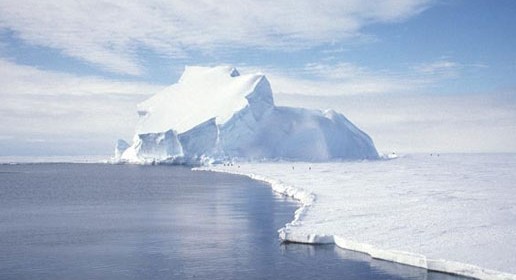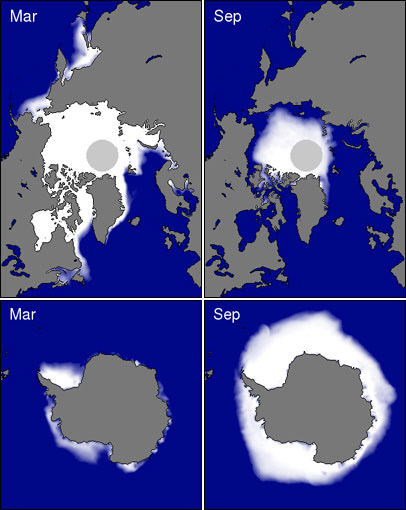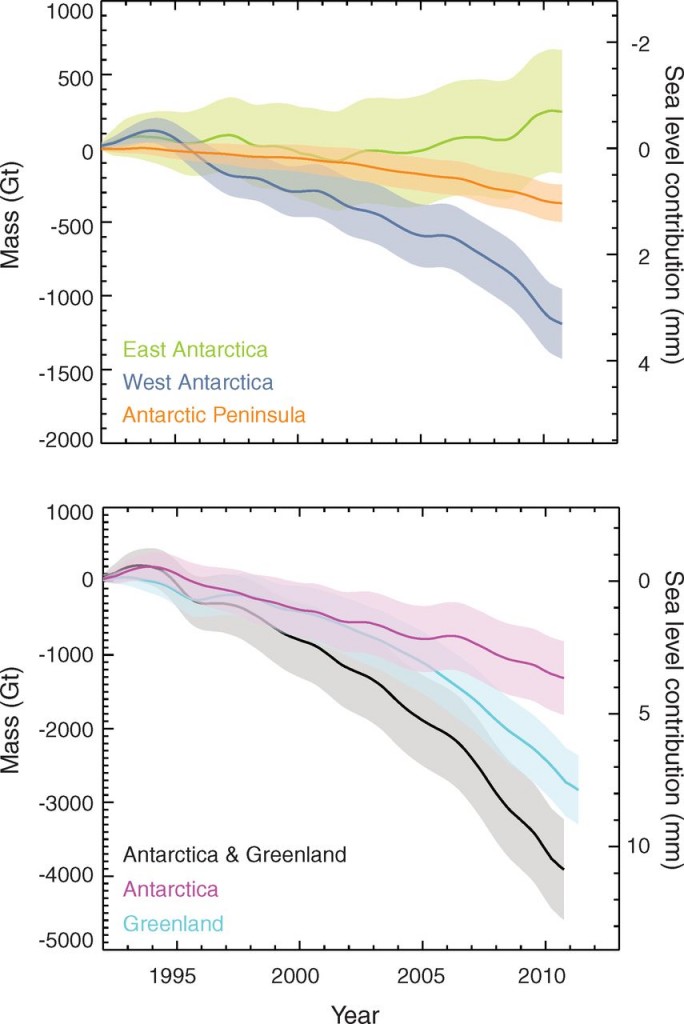Ice Levels In Antarctica Increasing

Cynic contentions that Antarctica is picking up ice every now and again rely on a slip of oversight, to be specific overlooking the contrast between area ice and ocean ice.
In glaciology and especially regarding Antarctic ice, not everything is made equivalent. Give us a chance to consider the accompanying contrasts. Antarctic area ice is the ice which has aggregated over a huge number of years on the Antarctica landmass itself through snowfall. This area ice hence is really put away sea water that once fell as precipitation. Ocean ice in Antarctica is very diverse as it is ice which frames in salt water basically amid the winter months. At the point when area ice melts and streams into the seas worldwide ocean levels ascend all things considered; when ocean ice liquefies ocean levels don’t change quantifiably.
In Antarctica, sea ice grows quite extensively during winter but nearly completely melts away during the summer (Figure 1). That is where the important difference between Antarctic and Arctic sea ice exists as much of the Arctic’s sea ice lasts all the year round. During the winter months it increases and before decreasing during the summer months, but an ice cover does in fact remain in the North which includes quite a bit of ice from previous years (Figure 1). Essentially Arctic sea ice is more important for the earth’s energy balance because when it increasingly melts, more sunlight is absorbed by the oceans whereas Antarctic sea ice normally melts each summer leaving the earth’s energy balance largely unchanged.

Figure 1: Coverage of sea ice in both the Arctic (Top) and Antarctica (Bottom) for both summer minimums and winter maximums – Source: National Snow and Ice Data Center
One must additionally be watchful how you translate patterns in Antarctic ocean ice. At present this ice is expanding in general and has been for a considerable length of time yet is this the smoking weapon against environmental change? Not exactly. Antarctic ocean ice is picking up due to a wide range of reasons yet the most acknowledged late clarifications are recorded underneath:
1) Ozone levels over Antarctica have dropped bringing on stratospheric cooling and expanding winds which prompt more ranges of untamed water that can be solidified (Gillet 2003, Thompson 2002, Turner 2009).
what’s more,
2) The Southern Ocean is rousing due to expanded downpour and snowfall and additionally an increment in meltwater originating from the edges of Antarctica’s property ice (Zhang 2007, Bintanga et al. 2013). Together, these change the organization of the diverse layers in the sea there bringing on less blending in the middle of warm and frosty layers and along these lines less softened ocean and seaside area ice.
With or without the ocean ice talk, it is entirely clear that truly in terms of Antarctic ice and ocean levels, ocean ice is not the most imperative thing to quantify. In Antarctica, the biggest and most critical ice mass is the area ice of the West Antarctic and East Antarctic ice sheets.
Thusly, how is Antarctic area ice getting along?

Figure 2: Estimates of total Antarctic land ice changes and approximate sea level contributions using a combination of different measurement techniques (Shepherd, 2012). Shaded areas represent the estimate uncertainty (1-sigma).
Evaluations of late changes in Antarctic area ice (Figure 2, base board) demonstrate an expanding commitment to ocean level with time, albeit not as quick a rate or quickening as Greenland. Somewhere around 1992 and 2011, the Antarctic Ice Sheets general lost 1350 giga-tons (Gt) or 1,350,000,000,000 tons into the seas, at a normal rate of 70 Gt every year (Gt/yr). Since a lessening in mass of 360 Gt/year speaks to a yearly worldwide normal ocean level ascent of 1 mm, these evaluations liken to an increment in worldwide normal ocean levels by 0.19 mm/yr.
There is variety between areas inside Antarctica (Figure 2, top board), with the West Antarctic Ice Sheet and the Antarctic Peninsula Ice Sheet losing ice mass, and with an expanding rate. The East Antarctic Ice Sheet is developing marginally over this period yet insufficient to counterbalance alternate misfortunes. There are obviously instabilities in the estimation systems yet free information from various estimation procedures (clarified here) all demonstrate the same thing, Antarctica is losing area ice all in all, and these misfortunes are quickening rapidly.

 Print
Print